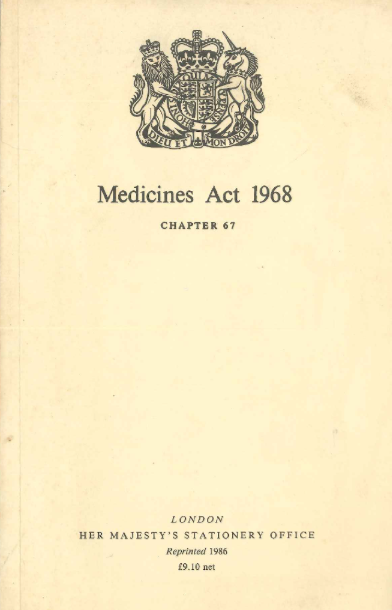 As I pointed out last week, the IndoEuropean root MED, to measure or take appropriate measures, has given rise to a large number of English words, among them “medicine” and related words, such as medicinal, medication, and remedy. The corresponding Latin word, medērī, meant to look after, heal, or cure. Metheglin (Welsh meddyglyn) came from meddyg, a healer or doctor and llyn, liquor. It contained water, spices, sweet herbs, and also honey, “Meddyg” may have been confused with “medd”, mead. The IndoEuropean root MEDHU meant honey, which was considered medicinal, as were mead and metheglin.
As I pointed out last week, the IndoEuropean root MED, to measure or take appropriate measures, has given rise to a large number of English words, among them “medicine” and related words, such as medicinal, medication, and remedy. The corresponding Latin word, medērī, meant to look after, heal, or cure. Metheglin (Welsh meddyglyn) came from meddyg, a healer or doctor and llyn, liquor. It contained water, spices, sweet herbs, and also honey, “Meddyg” may have been confused with “medd”, mead. The IndoEuropean root MEDHU meant honey, which was considered medicinal, as were mead and metheglin.
The Physicians of Myddfai (Meddygon Myddfai) were herbalists who lived in the Welsh village of Myddfai in Carmarthenshire, and were descended from the sons of the legendary Lady of the Lake. Their remedies were first published in Welsh in a vellum manuscript known as the Red Book of Hergest in around 1382. Honey was used in many of their recipes, and metheglin is mentioned in a second book of remedies, of the physician Hywel, as an expectorant (§113).
The word “medicine” is ambiguous. The Latin word “medicina” implied “ars medicina”, the art or practice of healing, and more specifically the administration of a drug; hence medicine. However, “medicina” could also imply “res medicina”, a medicinal thing or a medicament, in short a medicine. The latter meaning was first recorded in English in the early 13th century, the former not until about 100 years later.
So the phrase “too much medicine” could refer to too much practice of medicine, such as too many tests, too many guidelines, too many diagnoses. Or it could refer to too much of an individual medicament or too many different ones, resulting in too many adverse drug reactions and drug interactions. I prefer the term “too much healthcare”, which has the twin advantages of being unambiguous and encompassing aspects of care other than purely doctor-driven ones.

This year is the 50th anniversary of the Medicines Act 1968 (Figure 1), which dealt specifically with the use of medicines, not the practice of medicine. The use of the plural, medicines, makes it clear that it is the count noun we are talking about—a medicine, a medicament, or a medicinal product, defined as “a manufactured article, intended to be taken by or administered to a person or animal, which contains a compound or compounds with proven biological effects, plus excipients, or excipients only, and may also contain contaminants.”
The first concern of the act was to establish a Medicines Commission. After defining “Ministers” (§1), the act states (§2) that “There shall be established a body to be called the Medicines Commission (in this Act referred to as “the Commission”) to perform the functions assigned to the Commission by or under this Act.” Two sections later the act lays down the procedures whereby committees, so-called “section 4 committees” may be established. The Committee on Safety of Medicines (the erstwhile CSM), established in 1970, was one such committee. I was vice-chairman of the Medicines Commission immediately before the Commission and the CSM were conjoined in 2005 as the Commission on Human Medicines (CHM), which was formed primarily in order to harmonize with European procedures. Several other clinical pharmacologists were and are members of all these bodies, and have been prominent in many other relevant committees, such as the National Institute for Health and Care Excellence (NICE), the NIHR Health Technology Assessment (HTA) Programme, the British Pharmacopoeia Commission, and the Advisory Council on the Misuse of Drugs.
All of these and other aspects of clinical pharmacology will be in focus during Clinical Pharmacology Month in October, with a range of activities, including case presentations at grand rounds and prize competitions for medical students. We hope that the patron saint of pharmacology and clinical pharmacology will look favourably on all of this.
As I have previously pointed out, drug actions are mediated by chemical signalling, and chemical recognition is the function of receptors, which are major targets of many important medicines. The mechanism whereby drug–receptor interactions are translated into therapeutic outcomes involves chemical transmission by substances generally known as second messengers. So, no saint is better qualified to be the sought after patron saint than God’s great messenger himself, the archangel Gabriel. And Gabriel’s saint’s day falls tomorrow, on 29 September.
Jeffrey Aronson is a clinical pharmacologist, working in the Centre for Evidence Based Medicine in Oxford’s Nuffield Department of Primary Care Health Sciences. He is also president emeritus of the British Pharmacological Society.
Competing interests: None declared.
